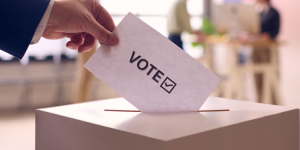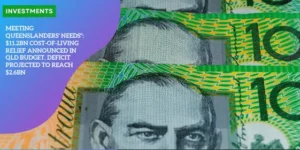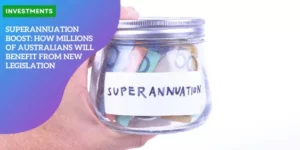Australia Heads to Polls: Everything You Need to Know About the May 3 Elections
Election Announcement and Timeline
Prime Minister Anthony Albanese has officially called for early federal elections, set to take place on May 3.
The announcement marks the beginning of a five-week campaign period, which is expected to focus heavily on the pressing issues of cost of living and housing crises.
This time frame will see both major parties, and their leaders, Labor’s Anthony Albanese and Liberal’s Peter Dutton, vying for voter support amidst significant economic and environmental concerns.

Major Campaign Issues
Cost of Living Crisis
As Australians gear up for the federal elections on May 3, the cost of living crisis sits high on the agenda. In the past three years, the nation has faced 12 consecutive interest rate hikes, leading to widespread financial strain.
The rising cost of essentials like food, fuel, and electricity has placed immense pressure on households.
Prime Minister Anthony Albanese has acknowledged these challenges, it is essential to emphasize the need for both immediate relief and long-term solutions economic stability.
Both the Labor and Liberal parties offer contrasting solutions to mitigate this crisis.
Peter Dutton of the Liberal Party has criticized the current government’s economic policies, promising more effective management.
Dutton’s plan includes boosting support for small businesses and reassessing economic policies to offer more sustainable financial relief in the long-term. The cost of living remains a battlefield, with voters closely monitoring what each candidate proposes.
Housing Shortage and Affordability
The housing crisis is another significant concern this election season.
Housing affordability and availability have reached critical levels, affecting Australians across the country.
Prime Minister Albanese has pledged to tackle this issue head-on.
The Labor Party plans to build 1.2 million homes over the next five years, aiming to ease the housing shortage and make homeownership more attainable for average Australians.
Peter Dutton has also recognized the need for affordable housing.
His approach includes reducing immigration to decrease demand in the housing market.
Furthermore, Dutton proposes allowing Australians to use their compulsory superannuation savings as a down payment on new homes, making it easier for first-time buyers to enter the market.
Environmental Policies
Both major parties recognize the importance of environmental sustainability and have committed to net-zero emissions by 2050.
However, their methods differ significantly. The Labor Party, under Albanese, prioritizes renewable energy sources such as solar and wind power.
This approach seeks to replace coal and gas, driving the nation towards a more sustainable future.
Peter Dutton and the Liberal Party, on the other hand, advocate for state-funded nuclear power plants.
The proposal includes constructing seven nuclear plants to meet Australia’s climate goals.
This policy aims to provide a stable and continuous power supply while reducing greenhouse gas emissions.
Transition
As Australians evaluate these pressing issues, the decisions made in the polling booths will shape the nation’s immediate and long-term future ️.
The outcome will not only determine the next Prime Minister but also the direction in which Australia will navigate its economic and environmental challenges.
Different Policy Approaches
Housing and Economic Management
Australia’s upcoming elections have revealed very distinct policy paths between the Labor and Liberal parties, particularly regarding housing and economic management.
The Labor Party, spearheaded by Anthony Albanese, proposes an ambitious plan to mitigate the housing crisis by constructing 1.2 million homes over the next five years.
This initiative aims to ease the housing shortage and improve affordability nationwide .
In contrast, the Liberal Party, under the leadership of Peter Dutton, advocates reducing immigration as a measure to lessen demand in the pressured housing market and is also considering allowing Australians to tap into their compulsory superannuation savings for home down payments .
On the economic front, Labor focuses on immediate relief from the cost of living pressure, coupled with strategies for sustained economic stability.
This ties into their broader agenda of addressing global challenges with a local perspective, aiming to alleviate current expense burdens while building a resilient economic future for Australians.
The Liberal Party, on the other hand, pitches itself as a harbinger of improved economic management. Dutton’s platform emphasizes robust support for small businesses, arguing that boosting entrepreneurial ventures will foster economic recovery and growth .
This highlights a classic economic management strategy aimed at nurturing domestic business ecosystems to create jobs and spur economic vitality .
Environmental Strategies and Climate Action
When it comes to tackling climate change, both parties share a commitment to achieving net-zero emissions by 2050. However, their approaches could not be more different ⚖️.
Labor is committed to renewable energy, favoring wind and solar power to replace traditional coal and gas energy sources .
This approach not only promises a reduced carbon footprint but also aligns with global trends favoring sustainable energy solutions.
Contrarily, the Liberal Party proposes an entirely different trajectory by suggesting the construction of seven state-funded nuclear power plants.
This strategy taps into nuclear energy’s capacity for providing a steady, significant power output with lower emissions—a proposition that some might view as a bolder and risk-laden alternative given the political and environmental considerations involved.
Transitioning Forward ⏳
As both parties lay out their diverging policy pillars, the forthcoming elections will determine which path Australia chooses—highlighting the electorate’s role in shaping the nation’s approach to these critical issues ️.
With nuanced perspectives in play, the focus will now shift to other factors that could sway voter sentiment leading up to May 3 ️.
Potential Election Outcomes
Historical Context and Election Dynamics
When discussing potential outcomes, history provides a significant backdrop. An Australian government has not lost an election after a single term since 1931.
This historical precedent gives Prime Minister Anthony Albanese’s Labor Party a potential advantage. However, the situation is complicated by Australia’s unique majority voting system, which mandates that candidates secure more than 50% of the votes to win.
This often necessitates forming coalitions or alliances with smaller parties and independents, making each election a complex calculation beyond the major party policies .
The Possibility of a Minority Government
A key potential outcome of the upcoming elections is the formation of a minority government.
With Labor currently holding a tenuous grip on the House of Representatives with 77 out of 151 seats, there is significant pressure, especially given the redistributed seats.
If neither Labor nor the Coalition secures a clear majority, the role of independents and smaller parties, such as the Greens, becomes crucial.
The 2022 elections saw a record influx of 19 unaligned legislators.
These legislators might play kingmaker roles, supporting either major party in return for policy concessions.
For example, Adam Bandt, leader of the Greens, has indicated his party could back a Labor minority government if it agreed to specific demands, including stringent environmental policies and healthcare reforms.
The Role of Unaligned Legislators and Smaller Parties
| Party/Group | Key Demands |
|---|---|
| The Greens | – Banning new coal and gas projects – Providing free dental care for all Australians – Implementing rent caps to address housing affordability concerns |
In 2010, a similar situation unfolded when the Greens supported a minority Labor government, leading to the introduction of a short-lived carbon tax repealed in later years by a conservative government.
The coalition-building efforts required in this election cycle will be vital.
Both Albanese and Dutton will need to negotiate adeptly to cement these alliances, considering the diverse and sometimes opposing demands of potential coalition partners.
Transitional Thoughts
As the elections approach, understanding these potential outcomes and historical contexts is crucial.
The balance of power may very well hinge on the smaller parties and their ability to leverage their positions within the broader electoral system.
The process of campaigning continues to unfold with its dynamic challenges and opportunities for both major parties.







